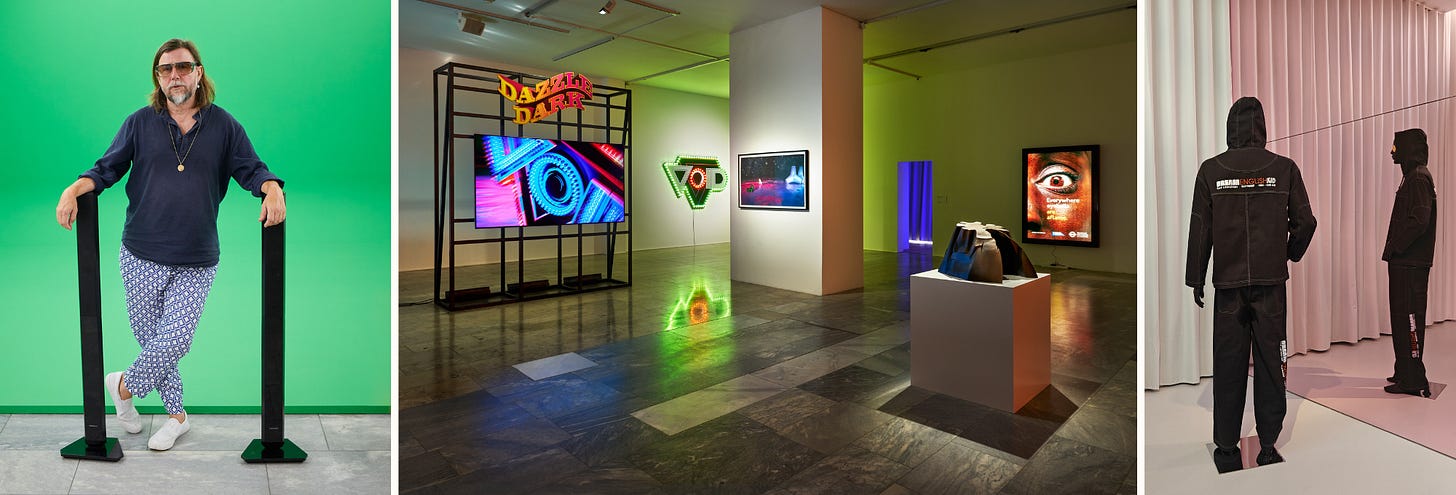A DEEPER RECESS 013: an interview with Mark Leckey
We speak to Mark Leckey freshly after opening his major survey exhibition, with a large body of new work, at the Julia Stoschek Foundation over Berlin Art Week.
22 September 2025
Welcome to the 13th edition of A Deeper Recess, the recessed.space interview series where we have a conversation with a leading artist or architect.
An interview with Mark Leckey
Details about Mark Leckey: Enter Thru Medieval Wounds, showing at the Julia Stoschek Foundation, which opened over Berlin Art Week 2025, are available at: https://jsfoundation.art/exhibitions/mark-leckey-enter-thru-medieval-wounds
There are several ideas flying around Mark Leckey’s work. The title of his new Berlin Exhibition, Enter Thru Medieval Wounds, invokes a bodily and historic narrative. This is present, but it’s thrown into a vortex with thoughts on the internet, neoliberal space, brands, found footage, music, and a whole lot else. Editor of recessed.space, Will Jennings, had a conversation with Leckey about all these things and much, much more.

Mark Leckey was born in the Birkenhead in 1864, the year the fellow scousers the Beatles landed in America with their Ed Sullivan appearance. One of the artist’s most celebrated works, Dream English Kid, 1964 - 1999 AD (2015), opens with the singular chord from A Hard Day’s Night, and then goes on a search for self-identity in post-war British culture through sounds, found footage, and anxiety. In Berlin, visitors watch this film sitting from sculptural versions of the Camden Bench, the concrete monolith designed by Camden Council in 2012 as a meticulously sculpted piece of hostile architecture.
All these - the built environment, politics, the archive, and music - are all key ingredients to Leckey’s work. So too is the “1999” of the aforementioned film title, with the artist giving a lot of recent thought to the turn of the millennium and what it meant for society, institutions, and technology. In Enter Thru Medieval Wounds, all these ideas are present with an added hook of medieval transformation.
The exhibition features several of Leckey’s key works, including Fiorucci Made Me Hardcore (1999) — a found-footage exploration of countercultural music scenes — in a survey presentation. The opening room, however, is all new or recent work in a carefully choreographed composition of sculpture, image, and sound. There is a huge London vibe to this space, from the bus stop adorned with pigeon spikes, sodium streetlamps, a map of Alexandra Palace Park, and other urban architecture and elements from Britain — which is where we start the conversation:

